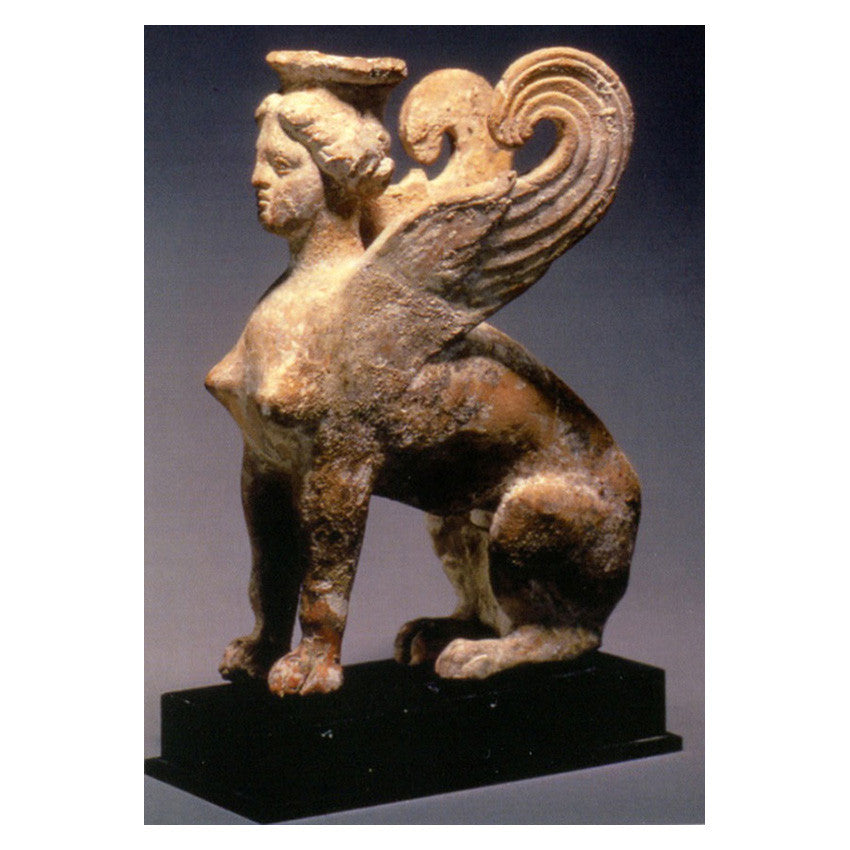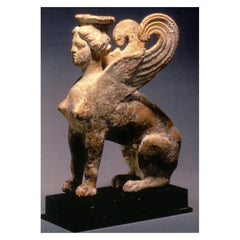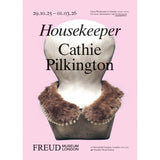Sphinx (postcard)
£1.20
Terracotta Figure of Sphinx, Greek, South Italy, late 5th-early 4th century BC.
This terracotta Sphinx is one of a number of representations of the mythical creature in Freud’s collection.
In the Greek legend of Thebes, the Sphinx is a creature with the face and breasts of a woman, wings of a bird and body of a lion, which is how she is portrayed by this object. Oedipus must solve her riddle or be eaten by her. The Sphinx’s riddle was:
“ What is it that walks on four legs in the morning, two legs at noon, and on three in the evening?” ”
Oedipus answered that it was Man, who crawls on all fours, then walks upright and in old age walks with a stick as a third leg.
The figure is solid and was originally covered in white slip, which is now worn away and discoloured. The Sphinx was once an Egyptian symbol of justice and protection, emblamatic of the Pharoahs. In Greek mythology, around the time of this object’s creation, the Sphinx was associated with war and death.
Greek, South Italian, late 5th-early 4th century BC. Terracotta, 18.5cm h.





